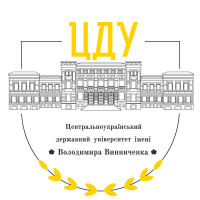Requirements for article design
A manuscript should be written using Microsoft Word. The article’s volume is 10-25 pages. Font – Times New Roman, size 14, line spacing – 1.5, margins – all 2 cm, paragraph – 1.25 cm. Formatting paragraphs with intervals (spaces) or tabs is not allowed. Text fragments should be bolded (terminology, if necessary) and italicized (quotes from sources and literature). Underlining fragments is not allowed. Only the following type of quotation marks should be used in the text: «». No hyphenation is in the text. Pages are not numbered.
UDC (Universal Decimal Classification, determined by the author) is placed on a separate line before the title, in the upper left corner.
Information about the author(s): surname, name, academic degree and rank, post, affiliation, e-mail, ORCID (http://orcid.org/), Scopus-Author ID (if any publications)
Article title
Abstracts and keywords in the article’s language (at least 1800 characters incl. spaces). No abbreviations or acronyms are allowed in the abstract, except for commonly used ones. The total number of keywords is no less than five and no more than seven in alphabetical order.
Main text comprising the following elements:
- problem statement in general and its connection with important scientific and practical tasks;
- analysis of recent research and publications that have initiated a solution to the problem concerned the author relies on;
- specification of the previously unsolved parts of the general problem the article is devoted to;
- purpose statement (task statement);
- presentation of the basic research material with full justification of research findings;
- conclusions f and prospects for further research.
Articles are formatted following Harvard Referencing style. Source data from archival and museum sources, media, materials from collections of documents, statistical sources, memoirs, diaries, etc. are not included in the general list of references but in footnotes (Times New Roman font, 12) and are designed following DSTU 8302:2015 “Information and documentation. Bibliographic reference. General provisions and compilation rules”. References should be indicated by a number without brackets or periods, using Microsoft Word footnotes.
Only historiographical sources (monographs, articles, etc.) should be included in the Bibliography list and the transliterated list (“References”).
Bibliography should contain at least 10 titles, of which no more than 20% are written by the author(s). The list is arranged alphabetically, not numbered, and formatted in accordance with Harvard Referencing style. After entering electronic resources, the date of access must be indicated in parentheses.
English abstract and keywords. If the article is in English, the abstract should be submitted first. Please pay attention to the need for a qualified translation of the article’s title, abstract, and keywords into English. Computer-assisted translation is prohibited.
References. It is also arranged in accordance with the rules of Harvard Referencing style. You can use http://ua.translit.cc/ (for Ukrainian-language publications).
EXAMPLES OF BIBLIOGRAPHY, REFENCES AND IN-TEXT CITATIONS
Tables and illustrations are numbered consecutively with Arabic numerals. Captions at the bottom. Figures and photographs (black and white, grayscale) are “embedded” in the article’s main text and are submitted additionally as separate files in one of the following formats TIFF, PCX, JPG, BMP, CDR.
Prohibition on using the aggressor state’s scholarly papers
It is prohibited citing and including in the reference list Russian-language publications published in any country after 1991, including papers written in other languages but published in russia and belarus. The citation of such sources is allowed if the author aims to refute the myths and cliches of our enemy’s propaganda from a scientific point of view.
The Editorial Board may not share the position expressed by the authors in their articles and is not responsible for the accuracy of the data, quotes, facts and references provided.








